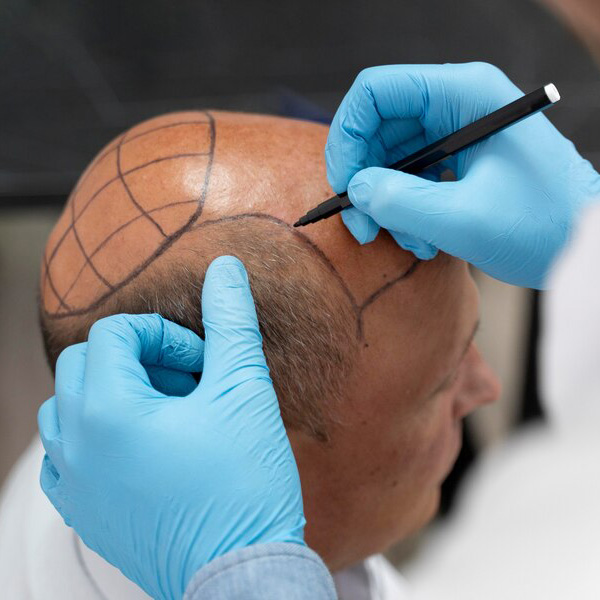Hair loss can affect confidence, appearance, and overall self-esteem. For many individuals seeking a long-term solution, hair transplant surgery has become a reliable and effective option. This advanced surgical technique restores hair growth by relocating healthy follicles from dense areas to thinning or balding zones.
Among the most preferred destinations for this procedure is the UAE, particularly for those exploring Hair Transplant in Dubai. With advancements in technology and patient care, this region has become synonymous with quality and precision in hair restoration.
What Is Hair Transplant Surgery?
Hair transplant surgery is a cosmetic procedure that moves hair follicles from one part of the body, known as the donor site, to another area experiencing hair thinning or baldness—the recipient site. Typically, the donor area is the back or sides of the scalp where hair is more resistant to balding.This procedure has evolved significantly over the past decades. Earlier techniques involved noticeable plugs, but today’s methods offer natural-looking, dense results with minimal discomfort and downtime.
Types of Hair Transplant Techniques
There are two primary techniques used in modern hair transplant surgery:
Follicular Unit Transplantation (FUT)
Also known as the strip method, FUT involves removing a strip of scalp from the donor area. The strip is then dissected into individual follicular units under a microscope before being implanted into the recipient area.
Advantages:
- Can transplant many grafts in one session
- Higher follicle survival rate
Considerations:
- Linear scar on the donor site
- Slightly longer recovery time
Follicular Unit Extraction (FUE)
In FUE, individual hair follicles are extracted directly from the donor area using a micro-punch tool and then inserted into the bald or thinning area.
Advantages:
- Minimally invasive with no linear scarring
- Faster recovery
Considerations:
- More time-consuming than FUT
- May require multiple sessions for extensive coverage
Ideal Candidates for Hair Transplant
Not everyone is a suitable candidate for hair transplant surgery. Here’s what makes a good candidate:
Healthy Donor Hair
Candidates need to have a stable and dense donor area to supply sufficient hair follicles.
Realistic Expectations
Understanding that results may vary depending on hair type, loss severity, and scalp condition is essential.
Age and Hair Loss Pattern
Candidates should ideally have a stable hair loss pattern. Hair transplant is often more successful in individuals over 25, when hair loss progression becomes more predictable.
Hair Transplant Procedure: Step-by-Step Breakdown
Let’s explore how the hair transplant process unfolds from start to finish.
Consultation and Scalp Assessment
The journey begins with a detailed consultation and scalp analysis. This step identifies the cause of hair loss and evaluates the scalp’s health and the donor area’s density.
Planning the Hairline and Graft Distribution
A customized plan is created, considering the patient’s facial structure, hairline shape, and desired density. Graft distribution is carefully calculated for the most natural look.
Donor Area Preparation
Depending on the technique (FUT or FUE), the donor area is trimmed and sterilized. Local anesthesia is administered to ensure comfort during extraction.
Extraction of Hair Follicles
Hair follicles are extracted using either the strip method (FUT) or individual punches (FUE), ensuring minimal damage to surrounding tissue.
Graft Preservation
Extracted grafts are preserved in a special solution to maintain their vitality before implantation.
Recipient Site Creation
Tiny incisions or slits are made in the balding area based on the desired angle, depth, and direction of hair growth.
Graft Implantation
The prepared grafts are meticulously implanted into the recipient sites. Precision in placement plays a major role in achieving natural-looking results.
Post-Surgery Care and Instructions
Once the surgery is complete, post-care instructions are provided. Mild redness or swelling may occur but typically resolves within a few days.
Hair Growth Timeline After Surgery
Here’s a table outlining what to expect after a hair transplant:
| Timeline | Expected Changes |
|---|---|
| 0–2 Weeks | Scabbing, redness, and initial healing |
| 2–8 Weeks | Shedding of transplanted hairs (normal phase) |
| 2–4 Months | Dormant period with little visible growth |
| 4–8 Months | Noticeable new hair growth begins |
| 9–12 Months | Full growth and hair density achieved |
Common Myths About Hair Transplant Surgery
| Myth | Reality |
|---|---|
| Hair transplants are only for men | Women can benefit too, especially with thinning |
| Results are instant | Full results take up to 12 months |
| The procedure is painful | It’s performed under local anesthesia for comfort |
| Transplanted hair falls out permanently | Only the shed is temporary; roots stay intact |
| It looks unnatural or fake | Modern methods ensure natural, dense outcomes |
Is Hair Transplant Permanent?
Yes, the results are generally permanent. The transplanted follicles retain their genetic resistance to balding. However, existing non-transplanted hair may continue to thin over time, so some patients may require additional treatments in the future to maintain a uniform appearance.
FAQs
What is the best age for a hair transplant?
While there’s no specific age limit, candidates over 25 with a stable pattern of hair loss typically see the most predictable results.
Will the results look natural?
Yes, with proper technique and planning, the transplanted hair blends seamlessly with existing hair, offering a natural appearance.
Is the procedure painful?
Most patients report minimal discomfort, as local anesthesia is used throughout the process.
Can women undergo hair transplant surgery?
Absolutely. Women experiencing hair thinning or pattern baldness can be suitable candidates depending on the cause and severity.
How soon can I resume work after surgery?
Most individuals return to work within 2–5 days, depending on the procedure and their comfort level.
Final Thoughts
Hair transplant surgery has become one of the most effective solutions for reversing hair loss and restoring confidence. From selecting the right technique to understanding post-operative care, each stage plays a vital role in the journey toward natural hair restoration. Whether you’re just starting your research or actively considering Hair Transplant, understanding how the procedure works is the first step toward making an informed decision. With proper care and realistic expectations, a fuller head of hair—and renewed self-confidence—can be well within reach.






























